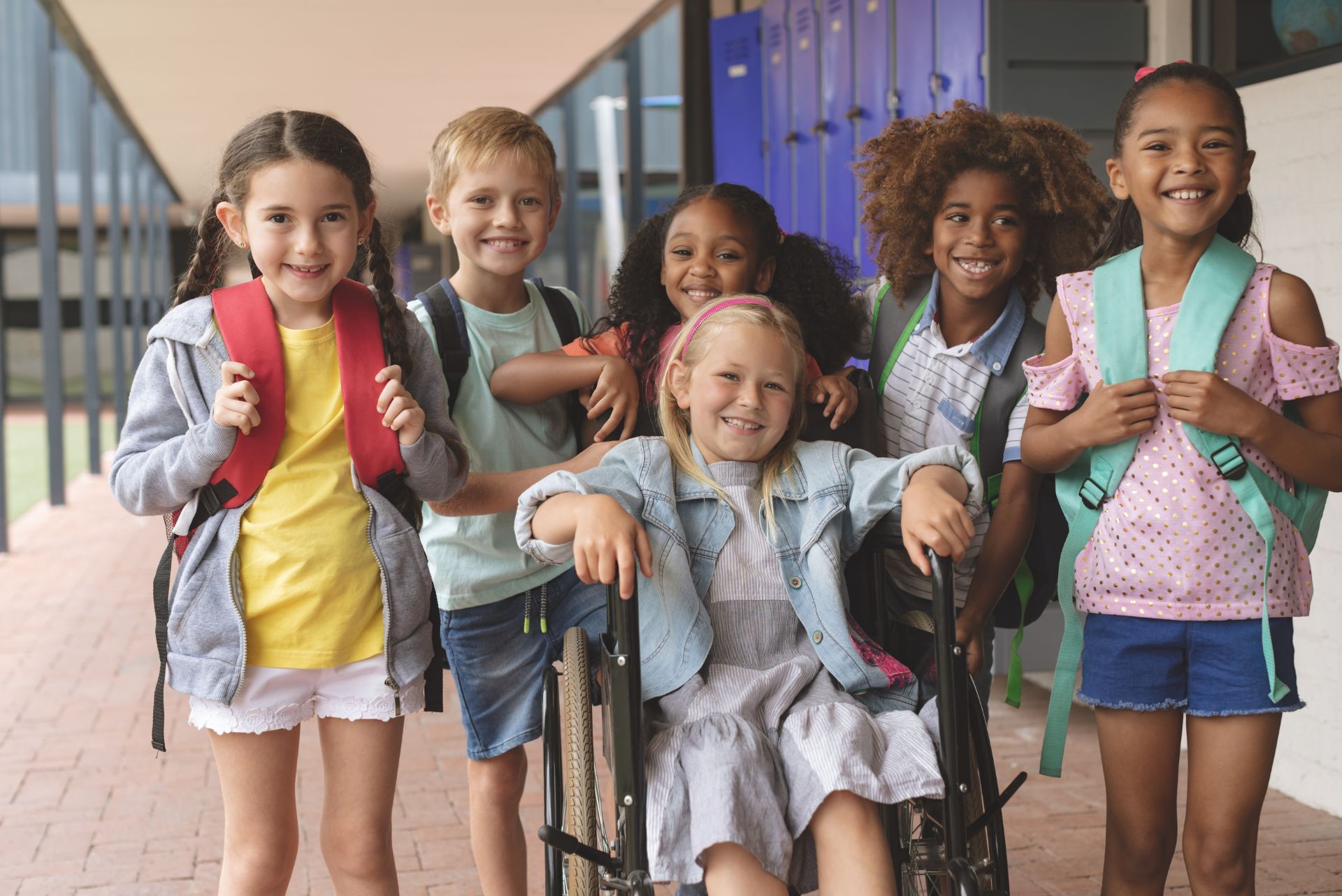3 Ways to Help Kids Understand Disabilities
Kids are great at spotting differences and unique traits in others and the world around them. Unfortunately, however, when faced with a disabled person, this natural curiosity can sometimes lead kids to stare, feel uncomfortable, or loudly ask uncomfortable questions. Even adults when caught staring by a disabled person have the knee-jerk reaction to look away quickly and pretend they’re not there!
When people see something they’re unfamiliar with, it can make them unsure how to act, which can make them feel uncomfortable. And when people are uncomfortable, they’ll often react out of fear when they shouldn’t—quickly turning a harmless interaction into an embarrassing or hurtful one.
Here’s how to help kids understand disabilities and how to treat those affected by them with kindness, respect, dignity, and inclusivity.
1. Teach Kids That God Created People with Disabilities
First, make kids aware that although people affected with disabilities might have different needs, those differences shouldn’t make us uncomfortable. There’s a great reminder from God in Psalms 139 that we are “fearfully and wonderfully made”, and that includes those affected with disabilities. God asked Moses, “Who has made man’s mouth, who makes him mute, or deaf, or seeing or blind? Is it not I, the Lord?” God made those affected with disabilities just the way they are for specific reasons—reasons designed to give God glory and be part of His masterful plan.
While disabilities can come with their own unique set of challenges, there is nothing “wrong” with anyone who is affected by one. We all have our own personal struggles, differences, and things that make us unique in a broken world. And we all deserve love, respect, and inclusivity from others as a human being who God created and loves. Let’s help kids know they can approach the situation with the mindset that those affected with disabilities are people just like you and me, with the same emotions and needs that we have.
2. Teach Kids How to Act Around Disabled People
Second, teach kids to treat those affected with disabilities the same way they would like to be treated: equally and with dignity. We like it when someone is friendly and kind to us, so why should we treat others any differently? Here are some tips on how your child can be courteous to a disabled person.
Disability Dignity Tips to Teach Kids:
- Look them in the eye, introduce yourself, and ask for their name.
- Keep your voice at a normal level. Don’t assume they have difficulty hearing.
- Remember that a wheelchair is part of an individual’s personal space and can often feel like an extension of the person’s body, the same way one might view their legs or feet. Be careful not to lean on it or use it as a footrest, and never push or move someone’s wheelchair unless you ask them first.
- Allow the person affected by the disability to set the pace in walking, talking, or playing.
- Don’t assume someone needs your help. Always ask first and wait for an answer.
- Always talk directly to the person affected by the disability, not to their caregiver.
- As you get to know your new friend, ask questions about ways you can serve them, how they would like to be treated or referred to, and if there’s anything else they’d like you to know.
3. Teach Kids Inclusive Language About Disabilities
Finally, as you discuss disabilities with your child, be sure to use inclusive words and never allow any kind of mocking from kids. In the past, society has used words like “afflicted”, “poor”, “suffers from”, or “handicapped” to describe disabled people. But many people affected by disabilities are independent and cope with life the same way anyone else would, making these words demeaning. After all, it is not a person’s disability that makes them disadvantaged, but rather a society that refuses to be inclusive for people of all ability ranges, so the way we talk about disabilities should reflect that.
Inclusive Language to Teach Kids:
- Rather than referring to someone as “afflicted” or “the disables”, say they are “affected by disablitity” or a “”disabled person.”
- Rather than saying someone is “handicapped” or “crippled”, say they “have a physical disability.”
- Rather than saying someone is “mentally handicapped”, say they “have a learning disability.”
- Rather than saying someone is “confined to a wheelchair”, say they “use a wheelchair.”
- Rather than saying someone “suffers from hearing loss”, say they are “deaf” or “hard of hearing.”
- Rather than saying someone is “sickly”, say they “have a chronic illness.”
This type of language will go a long way in encouraging us all to be inclusive in our speech and activities.
Remember, people are only made uncomfortable by what they don’t understand, so encourage kids to ask questions, do their own research, or learn more about how they can be respectful of disabilities around them. By taking the time to learn from and honor those around us, we can better love and enjoy our beautifully diverse world the way God does.
This content is from the CEF podcast Teach Kids. Listen to more content like this on the Teach Kids podcast through your favorite podcast platform. #TeachKids #KidsMin
3 Convictions for Christian Character Building for Kids | CEF
Help develop strong Christian character building for kids through biblical convictions about faith, family, and freedom that give their lives meaning.
Teaching Kids Worship: Everyday Moments That Honor God | CEF
Discover practical ways for teaching kids worship beyond Sunday mornings with these everyday activities that help children recognize God’s presence.
Spiritual Disciplines for Christian Family Devotions | CEF
Transform your Christian family devotions using sports analogies that active kids understand, turning Scripture, worship, prayer and giving into daily spiritual training.
Stay Connected with CEF
Subscribe to our email lists to receive updates, news, and stories based on your needs and interests.




